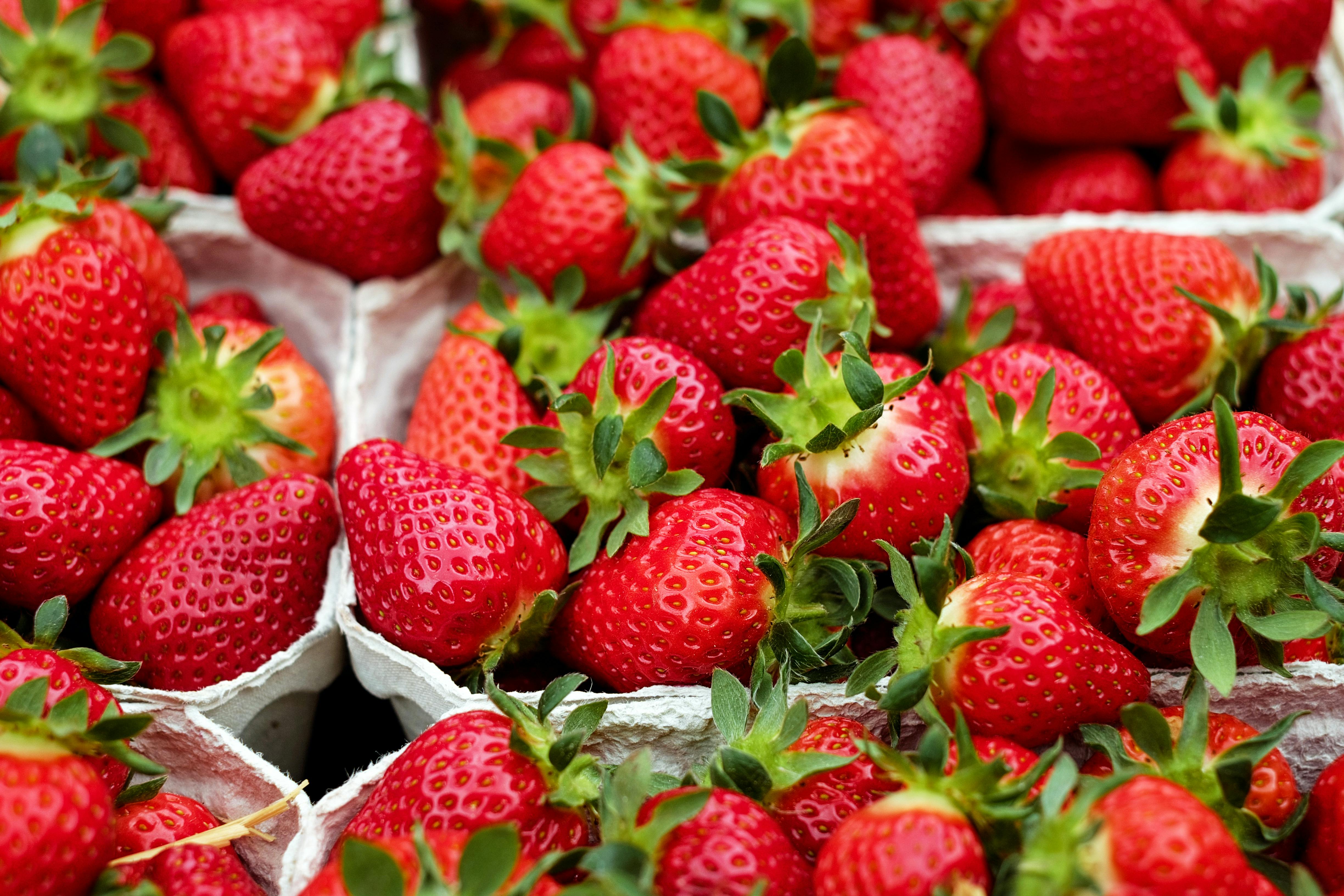Strawberries are delicious, nutritious fruits that are enjoyed by many people. They are packed with vitamins, minerals, and antioxidants that are beneficial for our health. But do strawberries need calcium? That is a question that many people ask. In this article, we will look at the role of calcium in strawberry nutrition and discuss whether or not they need it to grow and thrive. We will also discuss the different ways you can provide calcium to your strawberry plants.Yes, strawberries need calcium. Calcium is essential for proper root and plant development, as well as for overall plant health. It helps with cell wall strength and helps protect plants from disease and pests. Strawberries grown in soil that is deficient in calcium are more prone to diseases, and the fruit may be smaller than normal. Applying a calcium-rich fertilizer or supplement to the soil can help ensure that your strawberry plants get enough of this important nutrient.
Benefits of Calcium for Strawberries
Calcium is an essential mineral that plays an important role in the growth and development of strawberries. It helps strengthen the cell walls of the plant, increases root development, and improves nutrient uptake from the soil. Calcium also helps to reduce the incidence of diseases and pests in strawberries by increasing their resistance to stressors. Additionally, calcium helps to regulate enzyme activity and hormone levels, which can influence strawberry flavor and texture.
Calcium is one of the most important nutrients for successful strawberry production. If a soil’s calcium level is too low, it can lead to a number of problems such as blossom end rot, poor fruit quality, and even stunted growth. To ensure optimal strawberry production, gardeners should regularly test their soil for calcium content and apply a calcium-rich fertilizer if needed. Applying a calcium supplement directly to the plants can also help increase calcium uptake by the roots.
In addition to improving crop yields, providing adequate amounts of calcium for strawberries can also improve their flavor and texture. Calcium helps regulate sugar levels in strawberries which can affect sweetness, while also helping to firm up their fleshy inner structure. This makes them easier to pick without damaging them or causing them to become overripe quickly. A lack of calcium may result in soft or misshapen fruit that may not store as well as those given adequate amounts of this important mineral.
Overall, providing sufficient amounts of calcium is essential for successful strawberry production. Regular testing and adjusting soil pH levels accordingly will ensure that plants are receiving optimal amounts of this important nutrient. Applying a calcium-rich fertilizer or supplement directly to the plants can also help boost their performance and provide superior quality fruits with improved flavor and texture.
Sources of Calcium for Strawberries
Calcium is an important nutrient for strawberries, helping them to develop strong root systems, upright stems, and healthy flowers. There are a few different sources of calcium that can be used to help ensure your strawberry plants are getting the necessary nutrients. These sources include calcium-rich fertilizers, soil amendments, and foliar sprays.
Fertilizers that contain calcium can be applied directly to the soil around the strawberry plants or mixed into the irrigation system. Calcium-rich fertilizers like lime or gypsum can help to improve soil structure and pH levels while providing essential nutrients for better plant growth.
Soil amendments such as dolomitic limestone can also be applied to the soil prior to planting or after harvest. Dolomitic limestone helps to increase pH levels while providing a source of calcium for the strawberry plants. Adding compost or mulch around the base of the plants is also beneficial as it helps retain moisture and improves drainage in sandy soils.
Foliar sprays are a great way to deliver small amounts of calcium directly onto the plant leaves. Spraying a solution of calcium sulfate onto foliage will help provide additional calcium for your strawberries, but should only be done in moderation as too much could harm the plant’s leaves.
Overall, there are several different sources that can provide your strawberry plants with adequate amounts of calcium for healthy growth and development. It is important to use these sources appropriately in order to ensure your strawberries get all the nutrition needed for optimal growth and production throughout their growing season.
How Much Calcium Does A Strawberry Plant Need?
Calcium is an essential nutrient for strawberry plants, and they need a specific amount of it to grow and produce healthy fruit. Without enough calcium, the plants can suffer from stunted growth, poor flower production, and deformed or misshapen fruit. The amount of calcium a strawberry plant needs depends on the type of soil it grows in, as well as the climate and growing conditions.
In general, strawberry plants require at least 2–3 parts per million (ppm) of calcium in the soil in order for them to grow and produce normal fruit. However, this number can be higher depending on the type of soil and climate. For example, sandy soils may require 4–6 ppm of calcium for optimal growth while clay soils may need only 1–2 ppm. In addition, if you are growing strawberries in a humid climate or one that experiences frequent rainstorms, you may need to increase the calcium levels even further to ensure your plants get enough of this important nutrient.
When adding calcium to your soil for your strawberry plants, it’s best to use a slow-release fertilizer or lime. This will help ensure that your plants have access to a steady supply of calcium throughout their growing season. You can also apply liquid calcium directly to the soil around each plant if you find that the levels are low. Make sure to test your soil every few weeks during the growing season so that you can adjust your fertilizer or lime application accordingly.
Overall, it’s important to make sure your strawberry plants get adequate amounts of calcium in order for them to grow healthy and produce good fruit yields. Knowing how much calcium your particular type of soil needs is key – too much or too little can have negative effects on plant health and fruit production. Make sure to test your soil regularly throughout the growing season so that you can adjust any fertilizer applications accordingly.
How To Apply Calcium To Strawberry Plants
Calcium is an essential nutrient for healthy strawberry plants. Applying calcium to your strawberry plants can help promote strong root and stem growth, encourage larger fruit, and reduce the risk of disease. Here’s how to apply calcium to your strawberry plants:
The first step is to test the soil in your garden. You can do this by taking a soil sample from several areas of your garden and getting it tested at a gardening center or agricultural extension office. This will tell you what kind of nutrients are in the soil and how much calcium your plants need.
Once you know what kind of calcium you need, you can choose the right product for your garden. There are several types of products available, including liquid calcium sprays, granular fertilizers, and calcium-fortified composts. Make sure that the product you choose contains chelated calcium, which is more easily absorbed by the plants.
You can then apply the calcium directly to your strawberry plants or mix it into the soil around them. For liquid sprays, simply spray the foliage until it is completely wet. For granular fertilizers, mix one part fertilizer with four parts water and apply it to the top two inches of soil around each plant once a month during growing season. For composts, spread a layer about two inches thick over the soil surface and lightly mix it into the top few inches of soil around each plant.
Finally, water thoroughly after applying any type of fertilizer or compost so that it can reach down to the roots where it’s needed most. With regular applications of calcium-rich products, you’ll have healthy strawberry plants that will produce large fruits for many years to come!

Calcium Deficiency in Strawberry Plants
Calcium is an essential mineral for a healthy and thriving strawberry plant. Without adequate calcium, the plant may be more susceptible to diseases, pests, and other issues that can reduce yields or even kill the entire plant. Calcium deficiency in strawberry plants can lead to a number of symptoms that can be easily spotted by careful observation.
The most obvious symptom of calcium deficiency in strawberries is the yellowing of the leaves. This yellowing will start near the edges of the leaves and gradually move inward until it covers the entire leaf. This yellowing is caused by a lack of chlorophyll production which reduces photosynthesis and therefore reduces yields. Other symptoms include stunted growth, brown spots on the fruit, tip burn on newer leaves, and poor fruit development.
To prevent calcium deficiency in strawberry plants, it is important to make sure they are properly fertilized with a balanced mix of nutrients that includes calcium. Additionally, soil pH should be maintained between 6.0 and 7.5 as this range allows for optimal uptake of calcium by strawberry plants. Soil testing should be done regularly to make sure that adequate levels of calcium are present for maximum growth and yields from your strawberry crop.
Finally, proper watering practices should also be used to ensure adequate uptake of nutrients from the soil by your strawberry plants. Too much water can leach away valuable nutrients like calcium while too little water can also reduce yields as nutrient uptake is reduced when there isn’t enough water available for uptake in the soil profile.
In conclusion, calcium deficiency in strawberry plants can lead to yield losses if not addressed quickly and correctly with proper nutrition and watering practices. Make sure you monitor your crop closely so any signs of calcium deficiency can be addressed immediately before it causes too much damage to your crop!
Symptoms of Calcium Deficiency in Strawberries
Calcium is an essential mineral for healthy strawberry plants. When the soil lacks adequate calcium, the plants can suffer from calcium deficiency, which can lead to various symptoms. The most common symptom of calcium deficiency in strawberries is the yellowing of the leaves, followed by leaf curling and stunted growth. Other signs may include brown spots on the fruit and poor fruit quality. Young leaves may become distorted and die off prematurely. The plant’s flowers may also be affected, resulting in poor pollination and reduced yields.
To prevent a calcium deficiency, it is important to ensure that the soil’s pH level is between 6.0 and 6.8, as this range is optimal for absorption of calcium by strawberry plants. In addition, make sure to fertilize with a balanced fertilizer that contains all essential nutrients including calcium. Avoid over-fertilizing as this can lead to an accumulation of salts in the soil, which can further inhibit absorption of calcium by plant roots. Regular foliar applications or soil drenches with a liquid calcium supplement may help to alleviate symptoms of calcium deficiency in strawberries if they are already present.
Correcting Low Calcium Levels in Strawberries
Strawberries are an excellent source of calcium, but the calcium content in the fruit can be low if it’s not grown under optimal conditions. To ensure that strawberries are rich in calcium, there are several steps growers can take to correct low calcium levels.
First, they should pay attention to soil pH levels. Strawberries need a slightly acidic soil for optimal nutrient uptake, so growers should monitor the pH levels and adjust accordingly. If calcium levels are too low, adding lime to the soil can help raise the pH and make calcium more available to the plants.
Growers should also test their soil for other minerals like magnesium and sulfur. These nutrients work together with calcium to help plants absorb it more efficiently. If any of these nutrients are lacking, adding a fertilizer or compost can help balance out the soil’s chemistry and provide essential minerals to the plants.
Growers should also monitor irrigation levels carefully as this can affect calcium uptake by the plants. Overwatering can cause nutrient runoff and prevent strawberry plants from taking up enough calcium from the soil. Instead, growers should water deeply but infrequently to encourage deep root growth and promote better absorption of nutrients from the soil.
Finally, applying mulch around strawberry beds can help conserve moisture in the soil while also preventing nutrient leaching due to overwatering or heavy rains. Mulching also helps reduce weed growth which can compete with strawberry plants for essential nutrients like calcium.
By following these steps, growers can ensure that their strawberries contain enough calcium for optimal health benefits for consumers.

Conclusion
Strawberries are a delicious and nutritious fruit that can be enjoyed in many different ways. While they do not need calcium to grow, it is important to understand the different roles that calcium plays in a strawberry plant’s health and growth. Calcium helps to strengthen the cell walls of strawberry plants, which improves their resistance to disease and pests. Calcium also helps to increase the yield of strawberry plants as well as improve their flavor. Adding a calcium source to soil can help ensure that a strawberry plant will have all the nutrients it needs for optimal growth and production.
It is important for gardeners to be aware of the importance of calcium for strawberry plants and how this mineral impacts their growth. While strawberrires do not directly need calcium in order to survive, providing them with adequate amounts can help them thrive in any garden setting.



